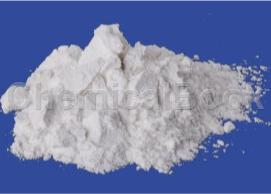Overview[1][2]
Dibenzuron is a veterinary chemical, a bimidine derivative of the anti-piroplasm drug diphenylurea, and an important biologically active compound. They have the advantages of broad spectrum, low toxicity, wide application range, long action time, and small dosage. They not only have a good therapeutic effect on piroplasmosis, anaplasmosis, and eperythrozoonosis in pigs and dogs, but also It also has a good preventive effect.

Preparation[1]
1. Preparation of 2-(3-nitrophenyl)imidazoline
In a 200L reaction kettle with a reflux device, add 100L of methanol, 14.8kg of m-nitrobenzonitrile, 1.6kg of sulfur and 8L of ethylenediamine under stirring; slowly heat to increase the temperature. After the reflux becomes stable, the temperature Keep the temperature at about 67°C for 24 hours and then take samples for testing. After the cyclization reaction between m-nitrobenzonitrile and ethylenediamine has fully occurred under the catalytic action of sulfur, the residual m-nitrobenzonitrile should be controlled at 2%. If necessary, add ethylenediamine appropriately to continue the reaction (add about 2L of ethylenediamine and continue the reaction for about 8 to 10 hours); after the reaction, most of the methanol is evaporated, the temperature is cooled to 0°C, and 2-(3-nitrate is precipitated) base phenyl) imidazoline solid, suction filtration, the filtrate continues to concentrate and crystallize out 2-(3-nitrophenyl) imidazoline, suction filtration; combine the aforementioned 2-(3-nitrophenyl) imidazoline solid at 60 Dry under reduced pressure at ℃ for 6 hours to obtain dry and pure 2-(3-nitrophenyl)imidazoline solid.
2. Preparation of 2-(3-aminophenyl)imidazoline hydrochloride
Put 6 kg of 2-(3-nitrophenyl) imidazoline, 0.6 kg of palladium carbon and 60 L of methanol aqueous solution into a 100L enamel reaction kettle, stir and heat up to 60°C, and keep stirring for 15 minutes to obtain mixed solution M; Add 9.0kg of formic acid dropwise to solution M, and finish the dripping in about 30 minutes. After 2 hours of incubation and reaction, mixed solution N is obtained; take a sample of solution N and test it. When the test result is that there is no 2-(3-nitrophenyl)imidazole in solution N After the phosphine remains, the solution N is then cooled to below 40°C and filtered, and the catalyst palladium carbon is rinsed with an appropriate amount of water. The filtrate is put into a distillation kettle and an appropriate amount of water is added for distillation to evaporate the organic solvent methanol in the filtrate to obtain pure 2 -(3-Aminophenyl)imidazoline aqueous solution.
Stir and cool the 2-(3-aminophenyl) imidazoline aqueous solution to below 30°C, add hydrochloric acid dropwise to it until it becomes neutral; cool down and crystals will precipitate. When it reaches 0°C, filter it with suction and dry under reduced pressure at 60°C. After 6h, 5.52kg of 2-(3-aminophenyl)imidazoline hydrochloride was obtained.
3. Preparation of bifendiurea
Put 5kg of the above 2-(3-aminophenyl) imidazoline hydrochloride into a 100L reaction kettle, add about 50L of water, stir and heat until dissolved, add 7.5kg of sodium acetate, stir and dissolve, and cool the brine to 0~5℃ , slowly drop about 2kg (1.65kg/L, M198) diphosgene. During the process, pay attention to the temperature of the reaction solution, which should not exceed 5℃. After dropping the diphosgene, continue the reaction for about 2 hours and then take a sample for detection. The reactant is 2- When the (3-aminophenyl) imidazoline hydrochloride residue is less than 1% (if there is a large amount of 2-(3-aminophenyl) imidazoline hydrochloride residue, an appropriate amount of diphosgene can be added), add liquid caustic soda dropwise to PH9.5~10.5, centrifuge when the temperature is lowered to 0°C, and the product is washed with a small amount of ice water to obtain crude bifendiurea.
Put the crude bifendiurea into a 100L reaction kettle, add about 40L of water, stir and raise the temperature to 40°C, add acetic acid dropwise to dissolve, add about 0.1kg of activated carbon, keep the temperature and stir for 60 minutes, then filter, and add the filtrate dropwise below 40°C. Alkali to pH 9.5 ~ 10.0, filter with suction when the temperature is lowered to below 10°C, rinse with a small amount of cold water until the pH value is below 9, and dry under reduced pressure at 60°C for 6 hours to obtain the refined product of bifendiurea.
Usage and dosage[1]
Subcutaneous and intramuscular injection: one dose per kilogram of body weight: 2.2 to 5 mg for horses, 1 to 2 mg for cattle (3 mg for trypanosomiasis), and 6.6 mg for dogs. Prepare a 10% sterile aqueous solution before use.
Notes[1]
The efficacy and safety range of this product are better than those of triazamidine and metafendiurea. It is less toxic than other anti-piroplasm drugs, but when the therapeutic dose is applied, about half of the animals still have adverse reactions similar to the effects of anticholinesterase (such as cough, myotremor, salivation and hernia, etc.), which can be alleviated by small doses of atropine . Large-dose injections may cause irritation to local tissues; this product cannot be injected intravenously because animals may react strongly and even cause death. Horses are more sensitive and should not use large doses. This product has a long residue period in edible tissues and a withdrawal period of 28 days.
Main reference materials
[1][Chinese invention] Preparation method of CN201710206318.92-(3-aminophenyl) imidazoline hydrochloride and imidazole phenylurea
[2] New Practical Manual of Veterinary Drugs

 微信扫一扫打赏
微信扫一扫打赏

